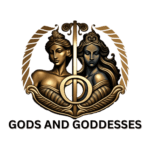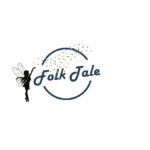HEADLESS HORSEMAN
The Headless Horseman is a legendary figure from American folklore and literature, most famously associated with the story “The Legend of Sleepy Hollow” by Washington Irving. According to the story, the Headless Horseman is the ghost of a Hessian soldier who was decapitated by a cannonball during the Revolutionary War. Since that time, the ghost has haunted the Hudson Valley region of New York, appearing at night on a black horse and seeking revenge on anyone who crosses his path.
The Headless Horseman has become a beloved part of American folklore and has been adapted and reinterpreted in countless ways over the years, from stage productions to films to children’s cartoons. While the specific details of the character can vary depending on the adaptation, he is always portrayed as a fearsome and imposing figure, with a chilling presence that strikes fear into the hearts of those who encounter him.

PHYSICAL CHARACTERISTICS
The Head: Obviously, the most notable feature of the Headless Horseman is his missing head. In some depictions, there may be a stump or bloody neck where the head should be, while in others he may carry the head with him or wear a cloak or hat that covers the missing part of his body.
Horse: The Headless Horseman is usually depicted as riding a horse, which is often described as being jet black and having glowing red eyes.
Rider: The Headless Horseman himself is typically portrayed as a tall, imposing figure with broad shoulders and a flowing cape or cloak. He may wear old-fashioned clothing, such as a tricorn hat or military uniform, depending on the specific story or adaptation.
ORIGIN
The Headless Horseman is a legendary figure from American folklore and literature, most famously associated with the story “The Legend of Sleepy Hollow” by Washington Irving. The origin of the Headless Horseman as a character is not entirely clear, but there are several theories and possible sources of inspiration:
Celtic folklore: Some scholars have suggested that the Headless Horseman may have been inspired by Celtic legends of the Dullahan, a headless rider who appears at night to announce the death of a mortal.
German folklore: Another possible source of inspiration for the Headless Horseman is German folklore, specifically the legend of the Wild Hunt. In this legend, a group of spectral hunters, led by a headless figure, ride through the night skies in pursuit of their prey.
American history: The Headless Horseman may also have been inspired by actual events and figures from American history. Some have suggested that the character was based on a Hessian soldier who was decapitated during the Revolutionary War and now haunts the Hudson Valley region of New York.

POWERS AND ABILITIES
Immortality: The Headless Horseman is often depicted as being immortal.
Supernatural strength: The Headless Horseman is usually portrayed as having superhuman strength.
Horseback riding: The Headless Horseman is a skilled horseman and is often depicted as being able to ride his horse with exceptional skill and agility.
Precision with weapons: The Headless Horseman is typically portrayed as an expert with a range of weapons, including swords, axes, and guns.
Flaming pumpkin throwing: In some adaptations, the Headless Horseman is said to be able to throw flaming pumpkins or other objects at his enemies, which can cause serious damage.
Supernatural abilities: The Headless Horseman is often depicted as having the ability to appear and disappear at will, control the movements of his horse without using reins, and move at incredible speeds.





